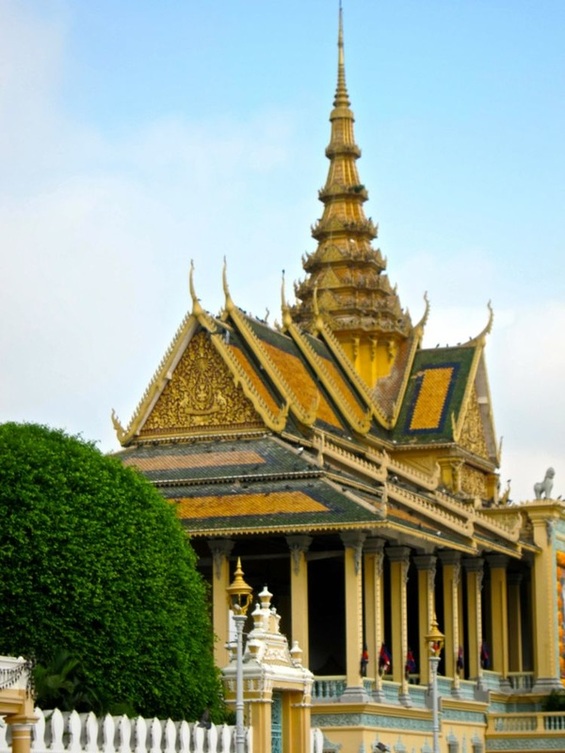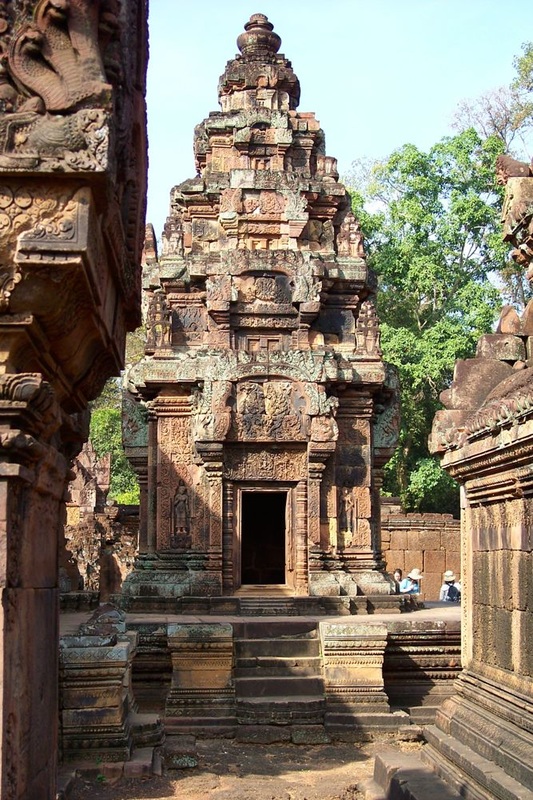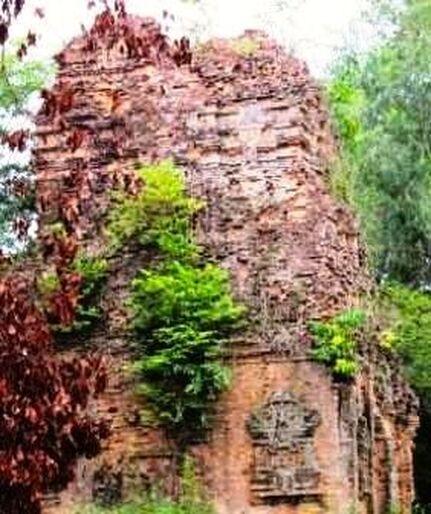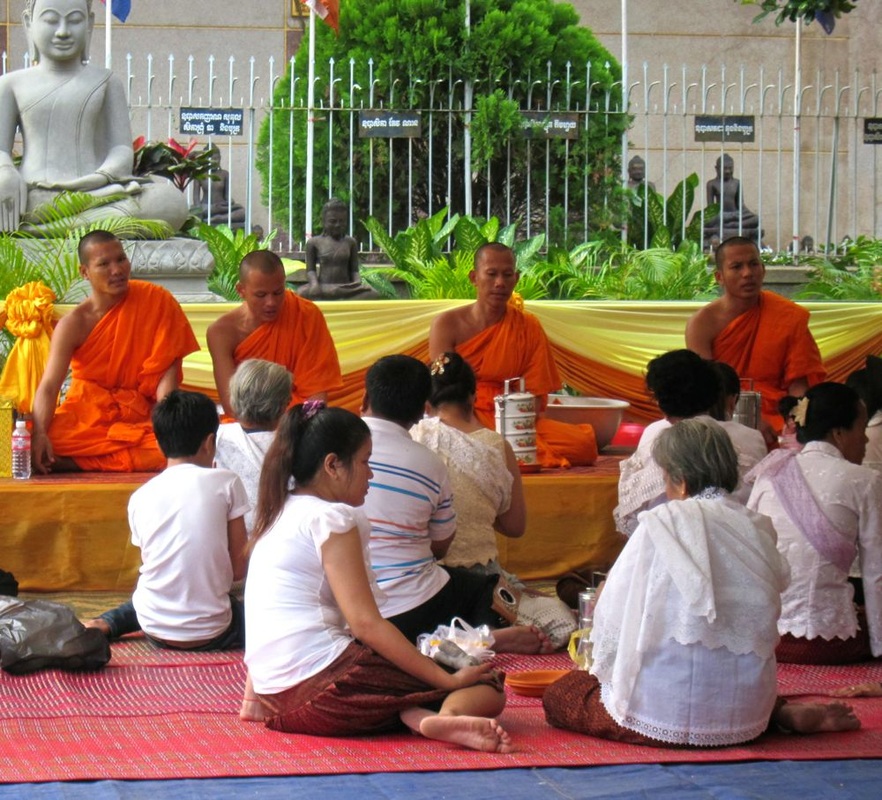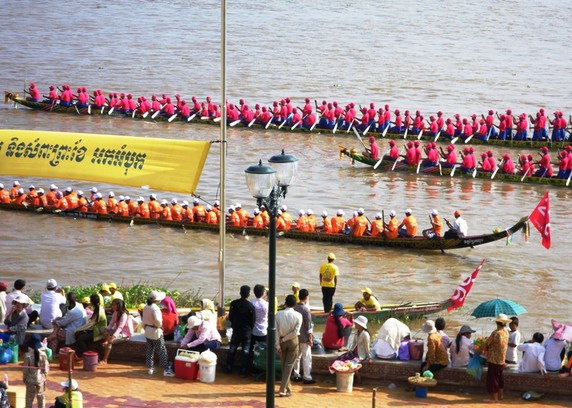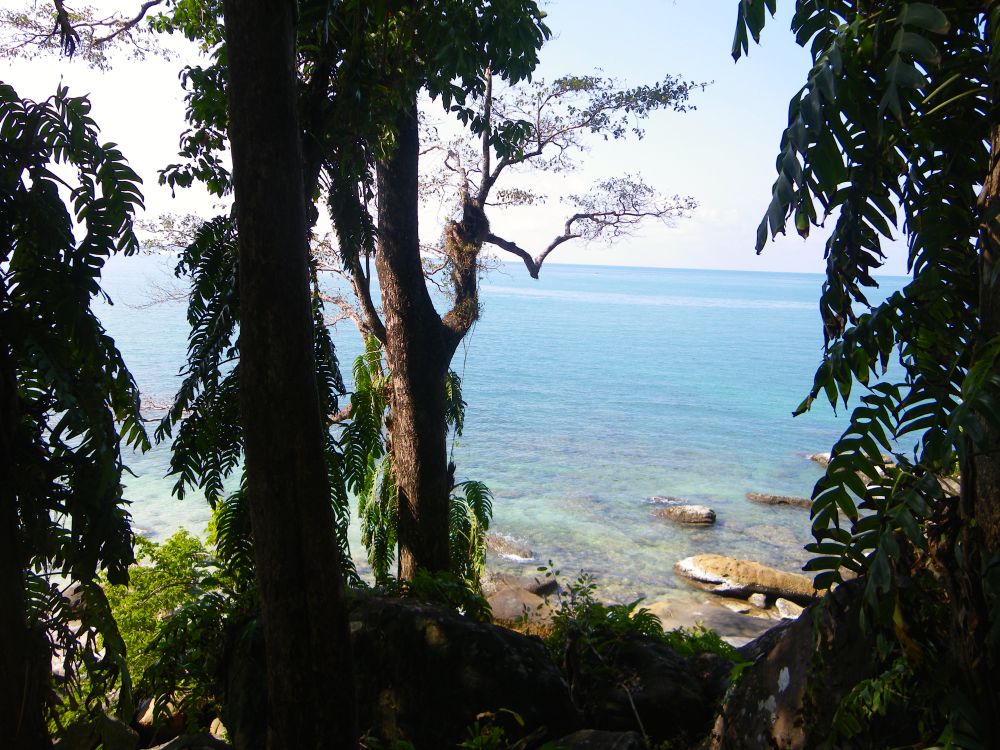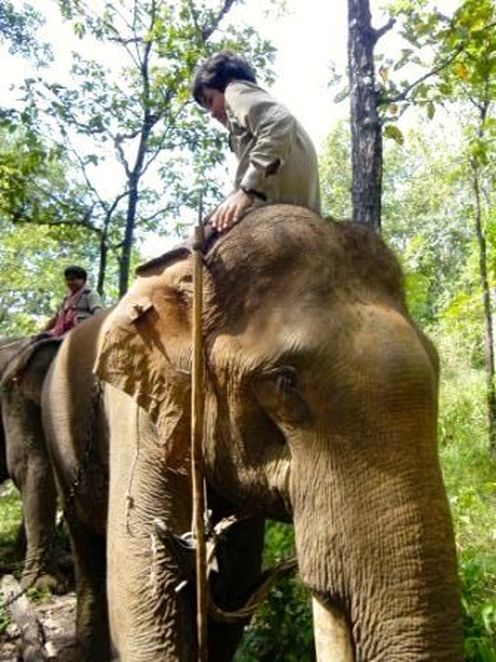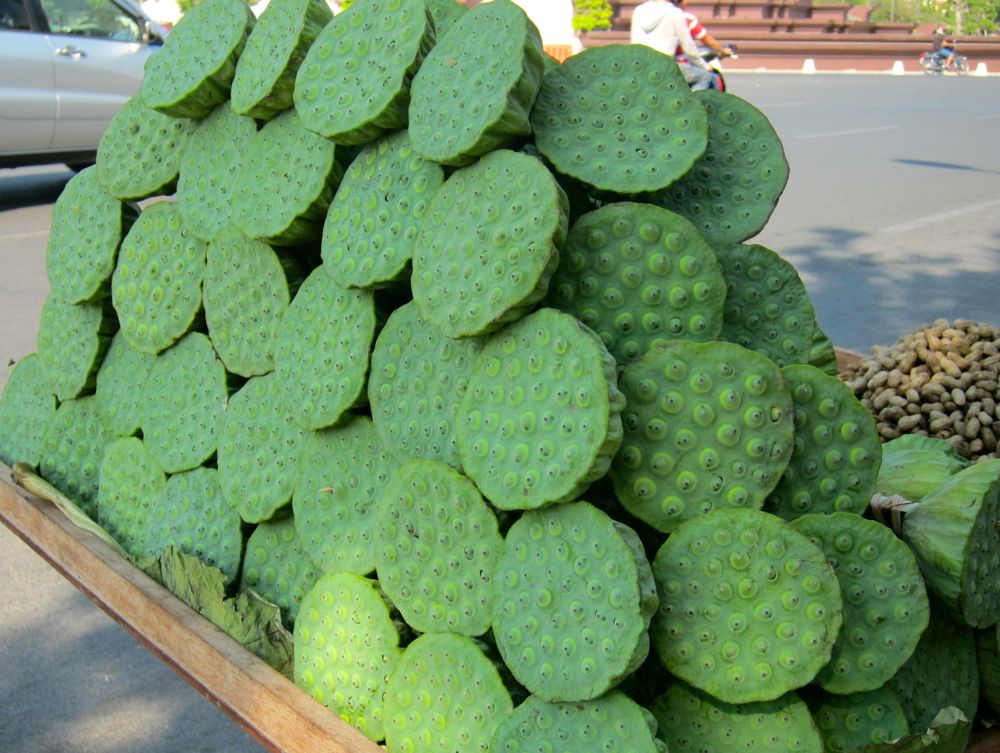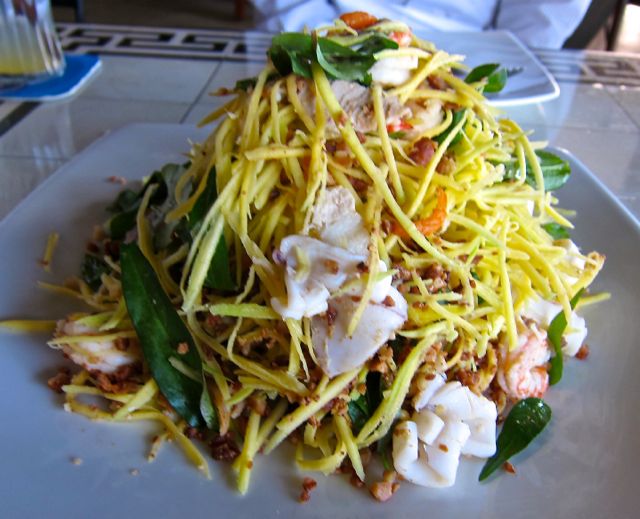8 Things That Make Cambodia Unique
Have you been to Cambodia? What would you consider its top attraction? You would agree that Cambodia's best are not just places. Once a great empire, it doesn't lack monuments. But visitors enjoy most, and I'm sure you did as well, its simplicity of life and the goodness of its people.
But for those who have not yet been to Cambodia, here are seven things that make Cambodia unique:
1. Buddhism: The Core of Khmer Life
Buddhism is at the core of life in Cambodia, particularly among the Khmer. Buddhist temples dot the place, and in many rural areas, those are the centers of life in the village.
Most essential ceremonies and events in Khmer life start with a temple visit. It is not unusual to see Buddhist monks in the streets, especially in the morning when they go around to beg.
Buddhism is at the core of life in Cambodia, particularly among the Khmer. Buddhist temples dot the place, and in many rural areas, those are the centers of life in the village.
Most essential ceremonies and events in Khmer life start with a temple visit. It is not unusual to see Buddhist monks in the streets, especially in the morning when they go around to beg.
2. Angkor Wat and Cambodia's World Heritage Sites
Cambodia's Angkor Wat and the other Angkor temples are spectacular. You can spend days exploring the exciting ruins and imagine the complex life lived there before.
Another heritage site is Preah Vihear, with its temples on the hill and monuments to the great builders of Angkor.
Cambodia's Angkor Wat and the other Angkor temples are spectacular. You can spend days exploring the exciting ruins and imagine the complex life lived there before.
Another heritage site is Preah Vihear, with its temples on the hill and monuments to the great builders of Angkor.
3. Pre-Angkorian Temples
Although the Pre-Angkorian ruins are not as impressive as the Angkor Wat and the other temples in Siem Reap, they are just as enjoyable. Some of these temples are near Phnom Penh or Siem Reap, the usual international gateways for tourists flying into Cambodia. Others, though, can only be reached during the dry season.
Recently, on a work trip to Kampong Thom, the school I was visiting was near the ruins of Sambor Prei Kuk, known as Isanapura, one of the centers of the Chenla Kingdom, which flourished around the sixth century. This trip took me about two and a half hours from Phnom Penh.
Although the Pre-Angkorian ruins are not as impressive as the Angkor Wat and the other temples in Siem Reap, they are just as enjoyable. Some of these temples are near Phnom Penh or Siem Reap, the usual international gateways for tourists flying into Cambodia. Others, though, can only be reached during the dry season.
Recently, on a work trip to Kampong Thom, the school I was visiting was near the ruins of Sambor Prei Kuk, known as Isanapura, one of the centers of the Chenla Kingdom, which flourished around the sixth century. This trip took me about two and a half hours from Phnom Penh.
4. Cambodia's Major Festivals
Your trip will be more enjoyable when you plan it around one of Cambodia's major festivals. Here are the significant celebrations:
This time of year is also the time to wash away all negative thoughts of jealousy, malice, and revenge and to promise to live the five Buddhist rules of conduct: do good deeds of mercy, compassion, sympathy, fairness, and wisdom.
A 3-day celebration offers candles, incense sticks, fruits, flowers, banana tree trunks with layers of banana leaves, coconut, and water to the New Year Angel and food to monks to receive blessings and gain merit.
Cambodians believe the New Year Angel will bring good luck, prosperity, health, and happiness to those who prepare well. In 2022, the New Year Angel was the fourth daughter of Kabil Moha Prum, Keriny Tevy, the Thursday Angel. She came on the 14th of April at 10:00 a.m. Khmer prepared her favourites, which included beans and sesame seeds. And, of course, flowers, incense and candles.
Keriny Tevi came riding an elephant, holding a harpoon on her right and ankusha on her left hand. On her head, she wore flowers of magnolia.
Your trip will be more enjoyable when you plan it around one of Cambodia's major festivals. Here are the significant celebrations:
- Khmer New Year
This time of year is also the time to wash away all negative thoughts of jealousy, malice, and revenge and to promise to live the five Buddhist rules of conduct: do good deeds of mercy, compassion, sympathy, fairness, and wisdom.
A 3-day celebration offers candles, incense sticks, fruits, flowers, banana tree trunks with layers of banana leaves, coconut, and water to the New Year Angel and food to monks to receive blessings and gain merit.
Cambodians believe the New Year Angel will bring good luck, prosperity, health, and happiness to those who prepare well. In 2022, the New Year Angel was the fourth daughter of Kabil Moha Prum, Keriny Tevy, the Thursday Angel. She came on the 14th of April at 10:00 a.m. Khmer prepared her favourites, which included beans and sesame seeds. And, of course, flowers, incense and candles.
Keriny Tevi came riding an elephant, holding a harpoon on her right and ankusha on her left hand. On her head, she wore flowers of magnolia.
- Ploughing Ceremony
The fortune of the year ahead depends on which tray the oxen choose. Cambodians await the predictions resulting from this annual ritual and still hold strong faith in it.
- Full Moon and Water Festival
- Pchum Ben
5. Cambodia's Beaches
Visitors can enjoy Cambodia's pristine beaches dotting the Gulf of Thailand in Kep, Koh Kong, and Sihanoukville. Kep was Cambodia's beach town during colonial times, so colonial houses still line the city, but now Sihanoukville has become the beach destination. Koh Kong is on the sea, but its beaches have remained undeveloped.
Sihanoukville has several beaches to boast about Oucheutel, Serendipity, Victory, Otres, Independent, Sokha, and the beaches in the surrounding islands. You can go kayaking, snorkeling, and diving. Oucheutel, Victory, and Serendipity are alive, with all the restaurants, bars, and hawkers selling all kinds of food and trinkets.
Otres Beach is quieter. The best are the beaches at Sokha and Independence Hotel and the newly developed islands where one can enjoy privacy and luxury. Worth the price.
Visitors can enjoy Cambodia's pristine beaches dotting the Gulf of Thailand in Kep, Koh Kong, and Sihanoukville. Kep was Cambodia's beach town during colonial times, so colonial houses still line the city, but now Sihanoukville has become the beach destination. Koh Kong is on the sea, but its beaches have remained undeveloped.
Sihanoukville has several beaches to boast about Oucheutel, Serendipity, Victory, Otres, Independent, Sokha, and the beaches in the surrounding islands. You can go kayaking, snorkeling, and diving. Oucheutel, Victory, and Serendipity are alive, with all the restaurants, bars, and hawkers selling all kinds of food and trinkets.
Otres Beach is quieter. The best are the beaches at Sokha and Independence Hotel and the newly developed islands where one can enjoy privacy and luxury. Worth the price.
6. Cambodia's Trekking Destinations
- Ratanakiri and Mondulkiri.These two places in Cambodia offer national parks to enjoy jungle treks or elephant rides through the jungles with a guide. Here, you can enjoy Cambodia's best waterfalls and meet some of Cambodia's ethnic minorities.
- Bokor Mountains. Closer to Phnom Penh, you can trek in Bokor Mountains. This place used to be another favorite for the French. On top of Bokor, the breeze is cool, a respite from the heat of Phnom Penh or Kep. Bokor is an easy drive from Kep for those who want a break from the ocean.
- The road leading up is now excellent, and development is going on for hotels. As you go up, you can stop at various places to see the ruins of old royal cabins, an old Catholic Church, and an old French hotel. My favorite is the Buddhist temple, where one can get a blessing from the monks and worship with the others as they light their sticks and offer prayers.
- Kirirom National Park. This park is Cambodia's first national park. A day's drive from Phnom Penh, it is a popular place for locals to spend time and enjoy hiking and bathing in the waterfalls.
7. Cambodia's Traditional Objects and Practices
Cambodia has already achieved a listing for some of its traditional heritage with the inclusion of Sbek Thom (shadow puppet theatre) in the UNESCO Intangible Cultural Heritage List.
Another one, often performed at weddings or Khmer New Year, is the "ayai," a traditional art form in which two people pitch their wits at each other through song. There is also the "kbach kun Boran Khmer," a conventional way of Khmer boxing.
Cambodians are also proud of traditional objects: their "chapei dong veng," a two-stringed instrument with a wooden body and long neck, and "hol phamuong," their traditional dress made from silk.
Cambodia has already achieved a listing for some of its traditional heritage with the inclusion of Sbek Thom (shadow puppet theatre) in the UNESCO Intangible Cultural Heritage List.
Another one, often performed at weddings or Khmer New Year, is the "ayai," a traditional art form in which two people pitch their wits at each other through song. There is also the "kbach kun Boran Khmer," a conventional way of Khmer boxing.
Cambodians are also proud of traditional objects: their "chapei dong veng," a two-stringed instrument with a wooden body and long neck, and "hol phamuong," their traditional dress made from silk.
8. Cambodian Cuisine
Enjoy savoring the familiar and "what that?" flavors of the local cuisine. Everyone knows Thai food, and Pad Thai is now on almost every menu in the world, but what about Cambodian food?
Many think that because Cambodia is close to Thailand, Laos, or Vietnam, the cuisine will be the same as these. Or, some believe that by being part of the old French Indochina, Khmer cheffery is closer to French cooking.
These are partly authentic, but Cambodian cuisine is truly unique in itself. The Cambodians have crafted their cuisine from all these influences, including the hints of India in the distant past. But the most significant single cuisine driver is the abundance of fresh seafood and produce.
Enjoy savoring the familiar and "what that?" flavors of the local cuisine. Everyone knows Thai food, and Pad Thai is now on almost every menu in the world, but what about Cambodian food?
Many think that because Cambodia is close to Thailand, Laos, or Vietnam, the cuisine will be the same as these. Or, some believe that by being part of the old French Indochina, Khmer cheffery is closer to French cooking.
These are partly authentic, but Cambodian cuisine is truly unique in itself. The Cambodians have crafted their cuisine from all these influences, including the hints of India in the distant past. But the most significant single cuisine driver is the abundance of fresh seafood and produce.
The flavor derives from spices and aromatic herbs such as galangal, tamarind leaf, turmeric, kaffir lime, and lemon grass, which they pound into a paste. They usually garnish generously with coriander, chives, heartleaf, basil, or mint, which they grow or purchase from the market.
The ingredients they use are usually cultivated around their homes or foraged in the fields, including rice paddy herbs, wild roots or sour leaves, and their favorite snacks, such as field roaches, spiders, sparrows, and locusts.
There is an abundance of fresh and saltwater fish, which the Cambodians salt, dry, and ferment into what is locally called prahok, a fermented fish paste added to almost anything. Their use is sparing, just enough to give the dish a distinct flavor, uniquely Cambodian.
In addition, as most vegetables grow, the local Cambodians add generous portions to their cooking, including banana and squash flowers, chive flowers, morning glory, bamboo shoots, lotus flowers, and indigenous green leaf vegetables.
The ingredients they use are usually cultivated around their homes or foraged in the fields, including rice paddy herbs, wild roots or sour leaves, and their favorite snacks, such as field roaches, spiders, sparrows, and locusts.
There is an abundance of fresh and saltwater fish, which the Cambodians salt, dry, and ferment into what is locally called prahok, a fermented fish paste added to almost anything. Their use is sparing, just enough to give the dish a distinct flavor, uniquely Cambodian.
In addition, as most vegetables grow, the local Cambodians add generous portions to their cooking, including banana and squash flowers, chive flowers, morning glory, bamboo shoots, lotus flowers, and indigenous green leaf vegetables.
Cambodian cuisine is a delicate balance of sweetness, sourness, spiciness, and saltiness. The taste of aromatic herbs made it a delight for the palate.
By the way, pepper from Kampot, one of Cambodia's provinces, has graced Parisian restaurants since the 1900s.
You can try Cambodian food in many restaurants, but go to the local eateries to taste the more authentic flavor.
Get out of the big cities and see the rural areas of Cambodia. Some trips you can take:
By the way, pepper from Kampot, one of Cambodia's provinces, has graced Parisian restaurants since the 1900s.
You can try Cambodian food in many restaurants, but go to the local eateries to taste the more authentic flavor.
Get out of the big cities and see the rural areas of Cambodia. Some trips you can take:
Facts about Cambodia:
- Area: 181,035 sq. km
- Population: 14.86 million
- Capital: Phnom Penh
- Currency: riel 1-4000
- Time: GMT+7 hours
- Country Calling Code 855
- Ethnic Groups: Khmer, ethnic Chinese, Cham, Ethnic Vietnamese and the Northeast ethnic minorities
Cambodia has a tremendous attraction because of the many unique elements in its culture. Its monuments brought wonder to people worldwide. Though poor, it has tried very hard to develop itself, retaining its simplicity of life in many villages.
